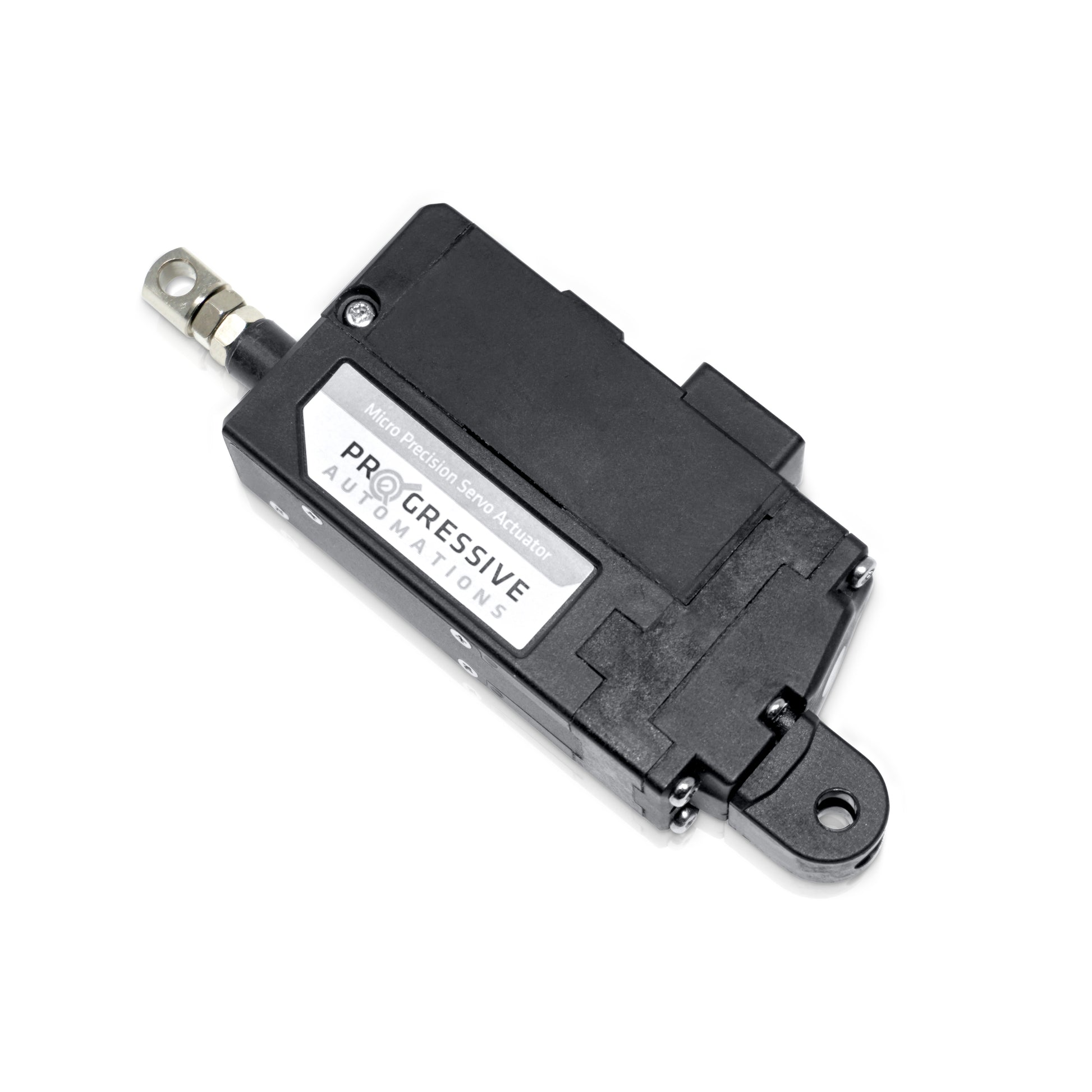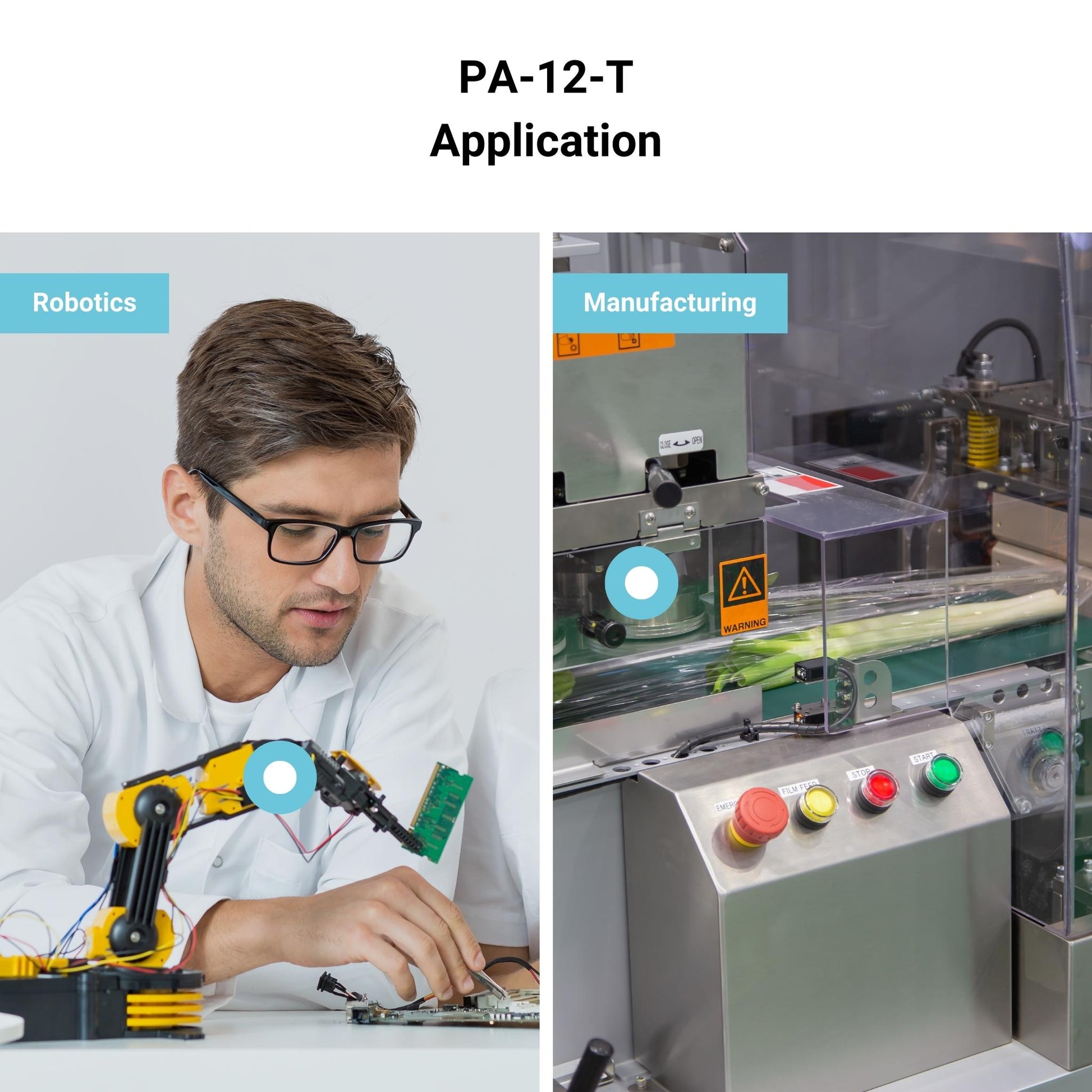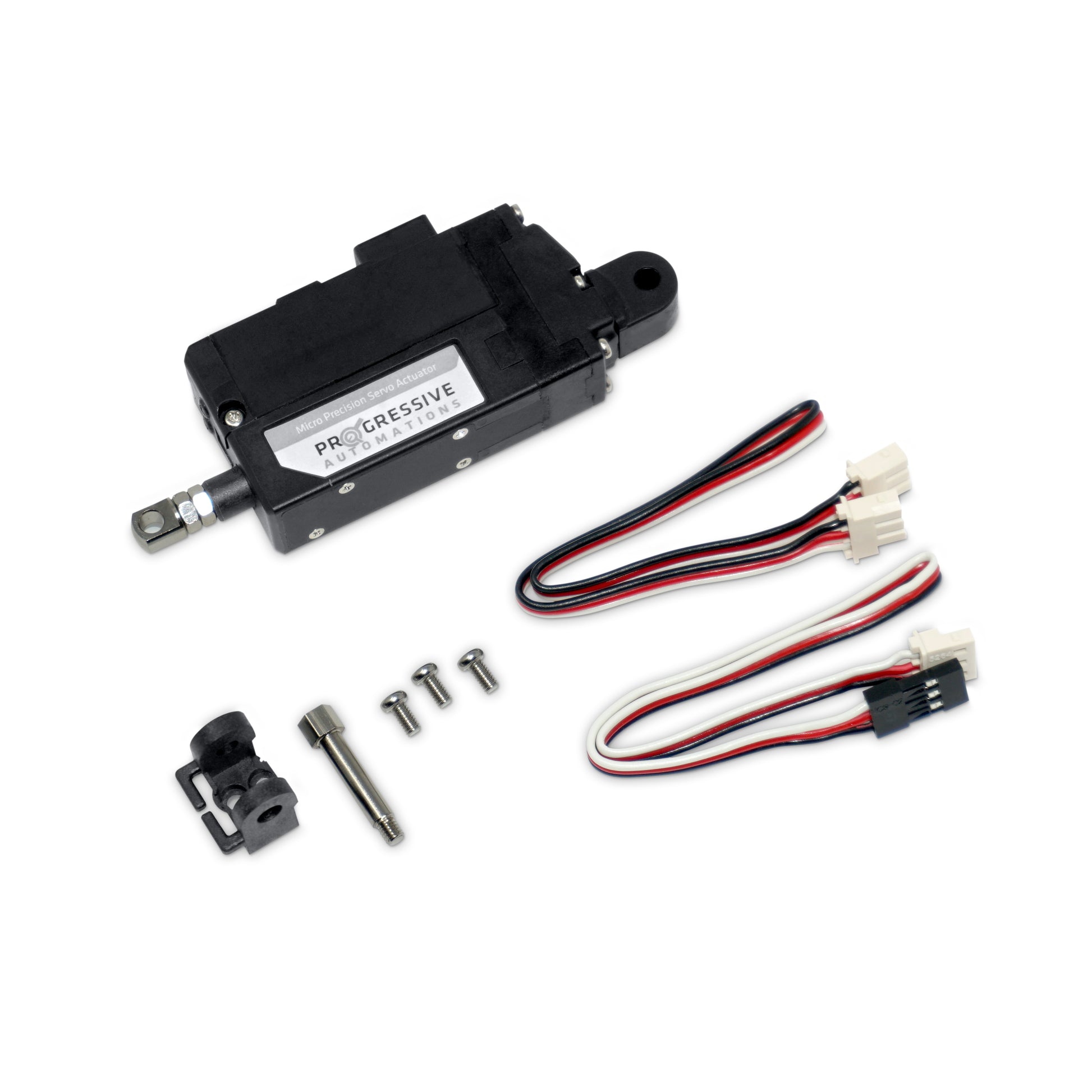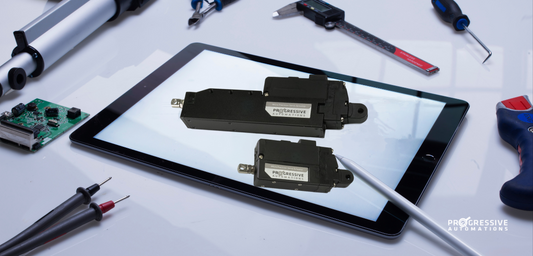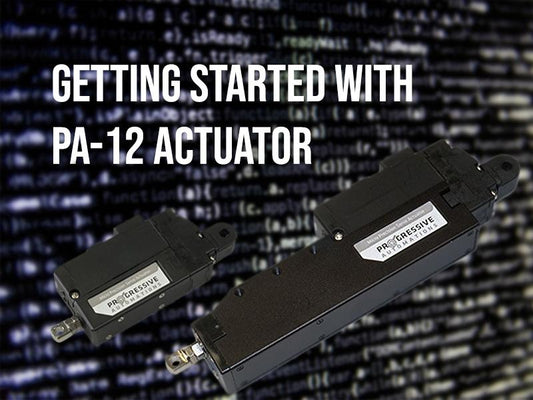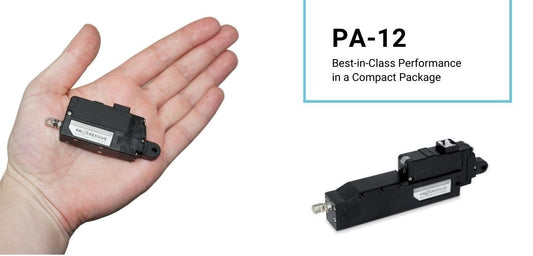
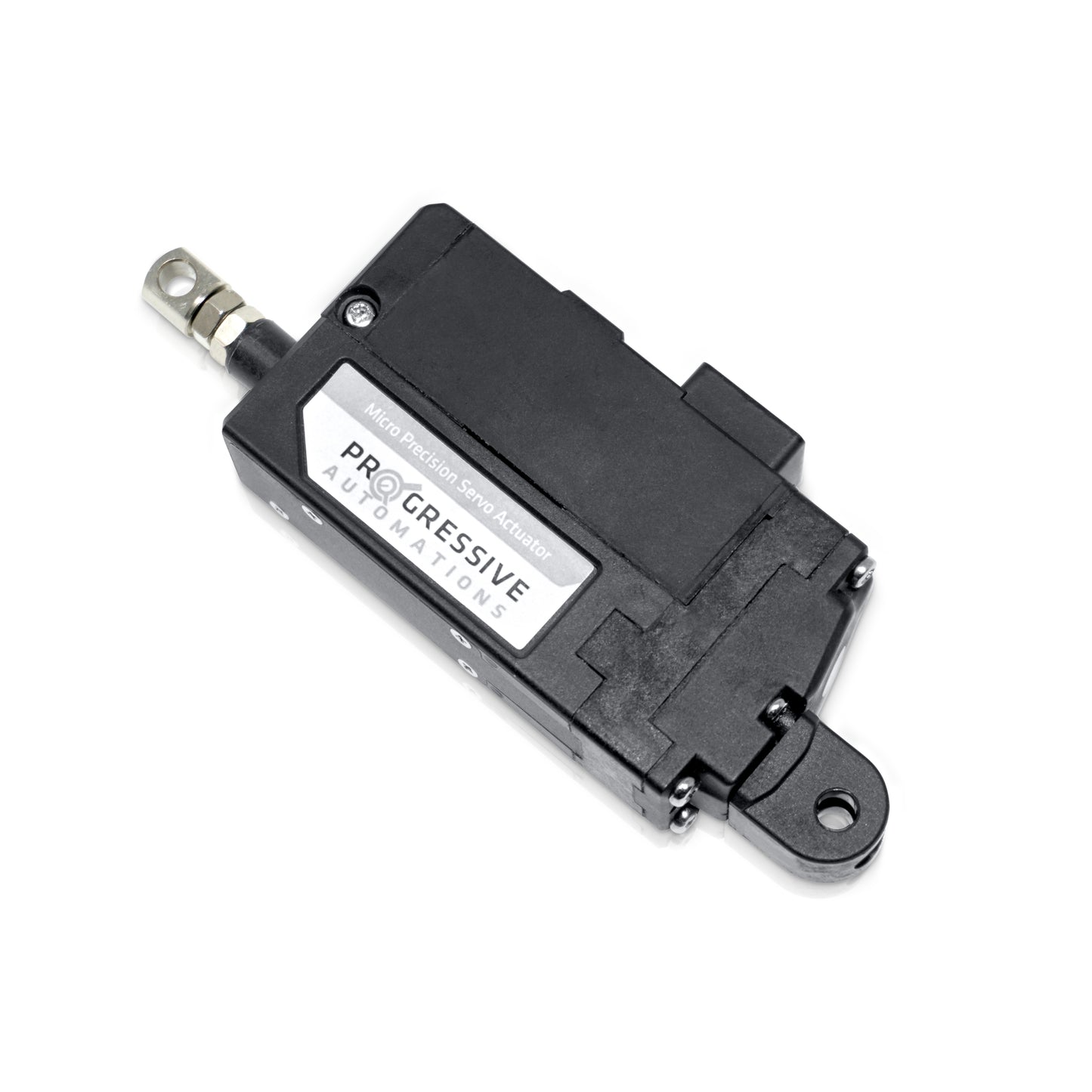






The PA-12-T Micro Precision Servo Actuator with TTL/PWM communication provides precise position control, with positional accuracy up to 100um. It has servo style, cored motor with an embedded drive circuit and allows for precision linear actuator control. This micro precision actuator, along with its RS-485 counterpart, is the only actuator in our line of products that is programmable, allowing for advanced control options.
This unit can be found in industries such as medical, automotive, and manufacturing. For a full list of specifications, customization options, and dimensional drawings, please see our PA-12 Data Sheet. We also have a selection of sample codes for various control options of the actuator.
Actuators Comparison ChartMOUNTING OPTIONS:
The BRK-12 bracket, designed for the Micro Precision Actuator, allows for a simple installation process. For more detailed information and specifications, please see our brackets product page.
CONTROL SYSTEMS:
The electric precision actuator is not compatible with any of our control boxes. It is compatible with our LC-12 Interface Controller and works with our control interface software that comes with every PA-12 actuator.
Custom options
Looking for an actuator but the specifications don't exactly match what you require? We have an extensive list of customization capabilities to ensure you get exactly what you need for your project. Download this product's data sheet and find out more about your customization options!
The PA-12-T Micro Precision Servo Actuator with TTL/PWM communication provides precise position control, with positional accuracy up to 100um. It has servo style, cored motor with an embedded drive circuit and allows for precision linear actuator control. This micro precision actuator, along with its RS-485 counterpart, is the only actuator in our line of products that is programmable, allowing for advanced control options.
This unit can be found in industries such as medical, automotive, and manufacturing. For a full list of specifications, customization options, and dimensional drawings, please see our PA-12 Data Sheet. We also have a selection of sample codes for various control options of the actuator.
Actuators Comparison ChartMOUNTING OPTIONS:
The BRK-12 bracket, designed for the Micro Precision Actuator, allows for a simple installation process. For more detailed information and specifications, please see our brackets product page.
CONTROL SYSTEMS:
The electric precision actuator is not compatible with any of our control boxes. It is compatible with our LC-12 Interface Controller and works with our control interface software that comes with every PA-12 actuator.
Custom options
Looking for an actuator but the specifications don't exactly match what you require? We have an extensive list of customization capabilities to ensure you get exactly what you need for your project. Download this product's data sheet and find out more about your customization options!
Following a set of standards is crucial for businesses to ensure their products and services can meet a level of quality that promotes customer satisfaction. At Progressive Automations, we aim for nothing but the best for our customers and strive toward continual improvements. Because of this, we are excited to announce that Progressive Automations is now ISO 9001:2015 certified!
Quality You Can Trust – Learn More2D/3D models


